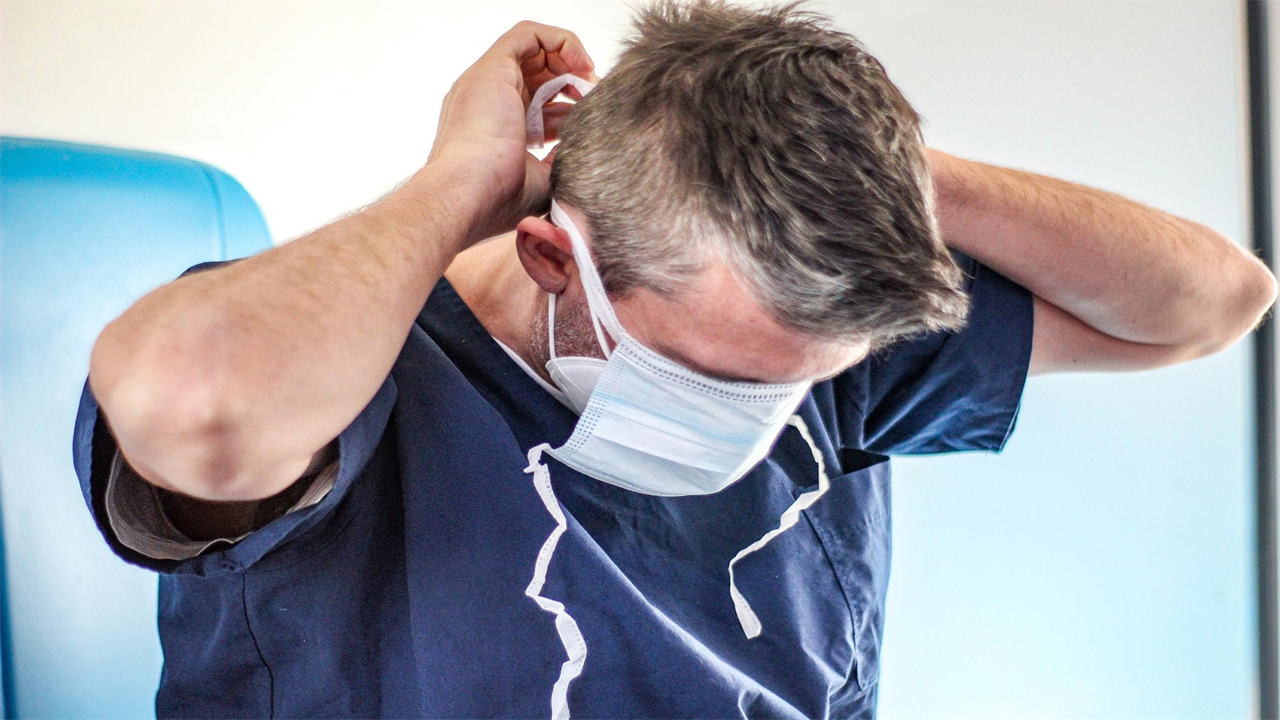Double Masking to Protect Yourself From COVID-19? New Research Shows How to Double the Effectiveness
0 View
Share this Video
- Publish Date:
- 20 April, 2021
- Category:
- Covid
- Video License
- Standard License
- Imported From:
- Youtube
Tags

Fit is most important with double masking to protect yourself from COVID-19.
A study published in JAMA Internal Medicine shows that wearing two face covers nearly doubles the effectiveness of filtering SARS-CoV-2 particles, preventing them from reaching the wearer’s nose and mouth and causing COVID-19.
A study published April 16, 2021 in JAMA Internal Medicine shows that wearing two face covers can nearly double the effectiveness of filtering out particles the size of SARS-CoV-2, preventing them from entering the wearer’s nose and mouth. reach and cause COVID-19. . The reason for the improved filtration is not so much the addition of layers of fabric as the elimination of openings or ill-fitting parts of a mask.
“The medical procedure masks are designed to have very good filtration potential based on their material, but the way they fit our face is not perfect,” said Emily Sickbert-Bennett, PhD, associate professor of infectious diseases. the UNC School of Medicine and lead author of the study.
To test the fitted filtration efficiency (FFE) of a range of masks, UNC researchers collaborated with James Samet, PhD, and colleagues at the USEPA Human Studies Facility on the UNC-Chapel Hill campus. There, they filled a 3-by-3-meter stainless steel exposure chamber with tiny aerosols containing salt particles, and had researchers set up combinations of masks to test how effective they were at keeping particles out of their breathing space.
Each individual mask or layered mask combination was equipped with a metal sample port attached to a tube in the exposure chamber that measures the concentration of particles entering the breathing space under the examiner’s mask. A second tube measures the ambient concentration of particles in the chamber. By measuring the particle concentration in the breathing space under the mask compared to that in the chamber, researchers determined the FFE.
Emily Sickbert-Bennett, PhD. Credit: UNC School of Medicine
“We also had the researchers undergo a series of movement activities in the room to simulate the typical movements a person can perform throughout the day – bending at the waist, talking and looking left, right, up and down,” said Phillip Clapp. , PhD, an inhalation toxicologist in the UNC School of Medicine who has been testing mask FFE with sickbert-Bennett since the pandemic began.
According to their findings, the baseline filter efficiency (FFE) of a mask differs from person to person, due to the unique fit of the face and mask. But in general, without changing the fit, a procedure mask is about 40-60% effective at keeping out COVID-19 particles. A cloth mask is approximately 40% effective.
Their recent findings on doubling face masks show that when a cloth mask is placed over a surgical mask, the FFE improved by about 20%, and even more so with a tight-fitting sleeve mask, such as a gaiter. When applied over procedure masks, cloth masks improve the fit by eliminating gaps and keeping the procedure mask closer to the face, consistently covering the nose and mouth. When a procedure mask is worn over a cloth mask, the FFE improves by 16%.
“We have found that wearing two loosely fitting masks does not give you the filtration advantage that a tight-fitting procedure mask does,” said Sickbert-Bennett. “And with current data showing how effective wearing a mask is in preventing the spread of COVID-19, the best form of double masking is when you and the person you are communicating with are each doing a very tight fit. wearing a mask. “
Reference: “Mounted Filtration Efficiency of Double Masking During the COVID-19 Pandemic” by Emily E. Sickbert-Bennett, PhD, MS; James M. Samet, PhD, MPH; Steven E. Prince, PhD; Hao Chen, PhD; Kirby L. Zeman, PhD; Haiyan Tong, MD, PhD and William D. Bennett, PhD, Apr 16, 2021, JAMA Internal Medicine.
DOI: 10.1001 / jamainternmed.2021.2033
This study was funded in part by a grant from the Centers for Disease Control and Prevention (CDC), and builds on research conducted by the agency earlier this year that recommended the CDC’s recommendation to disclose double masking to the public. support, supported. Sickbert-Bennett and Clapp have previously discussed this recommendation and their research into the importance of mask fitting with news outlets in a taped conversation, which can be seen here.










